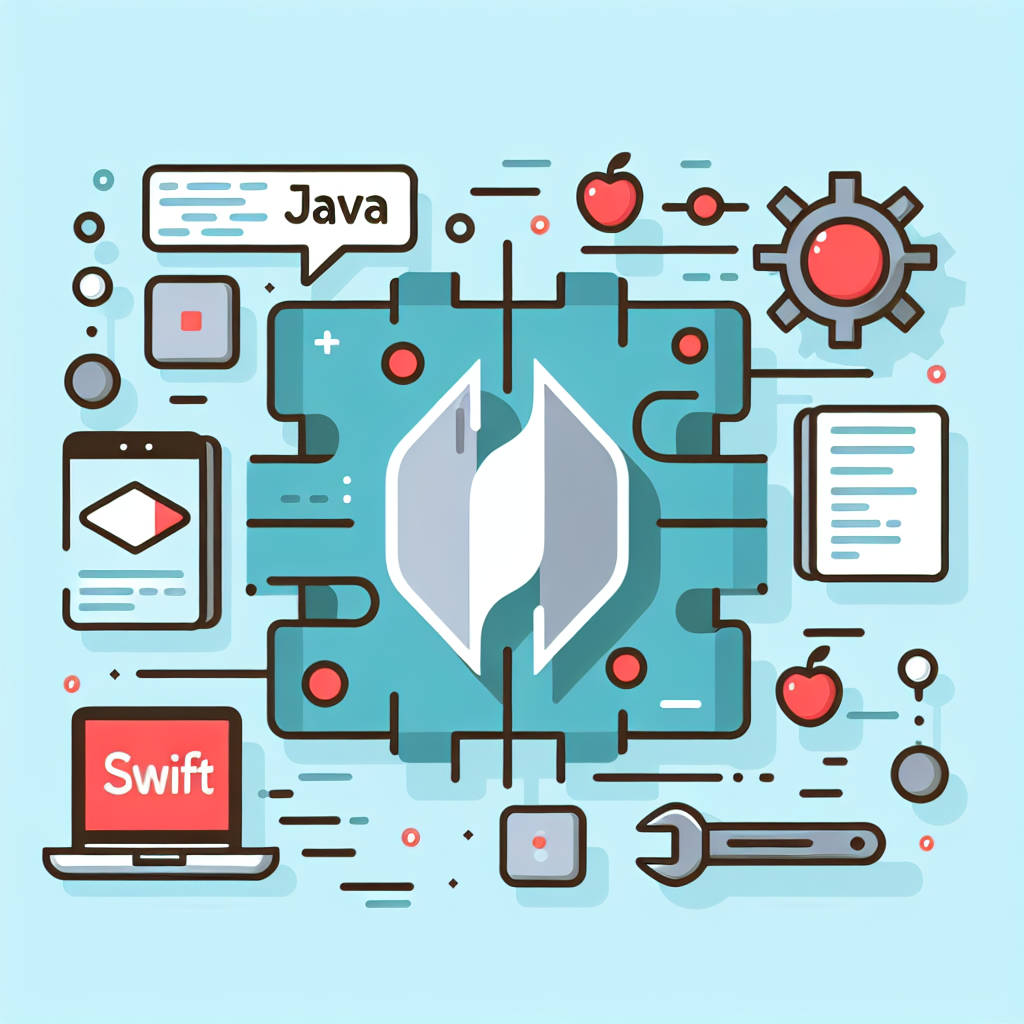Convert Java to Swift Effortlessly: Try Our Tool Now!
Effortlessly convert Java code to Swift with our intuitive tool. Boost productivity and streamline app development. Try our Java to Swift converter today!
Source Code
Converted Code
Output will appear here...
Effortlessly convert Java code to Swift with our cutting-edge Java to Swift tool. Ideal for developers transitioning from Android to iOS, this tool ensures seamless code translation, reducing development time and enhancing cross-platform compatibility. Boost productivity and maintain code integrity with accurate syntax conversion and comprehensive support for diverse programming environments.

Java to Swift Conversion Tool Link to this section #
Efficiently transition your codebase from Java to Swift with our robust Java to Swift conversion tool. This tool is engineered for developers aiming to streamline their cross-platform mobile development process, particularly when migrating Android applications to iOS.
Key Features: Link to this section #
- Automatic Syntax Mapping: Converts Java syntax to Swift, handling data types, control structures, and function declarations.
- Preserves Logic: Maintains the core logic of your code to ensure functionality remains consistent across platforms.
- User-Friendly Interface: Simplifies the conversion process with an intuitive UI designed for both novice and experienced developers.
Benefits: Link to this section #
- Time-Saving: Reduces manual coding effort, allowing developers to focus on optimizing app performance.
- Consistency: Ensures code uniformity across different platforms, minimizing bugs and errors.
- Cost-Effective: Cuts down on development costs by automating the conversion process.
How It Works: Link to this section #
- Input Your Java Code: Paste your Java code into the tool.
- Automatic Conversion: The tool analyzes and translates the code into Swift.
- Review Output: Examine the Swift code for accuracy and make any necessary adjustments.
Example Conversion: Link to this section #
Java Code:
public class HelloWorld {
public static void main(String[] args) {
System.out.println("Hello, World!");
}
}
Swift Equivalent:
class HelloWorld {
func main() {
print("Hello, World!")
}
}
Additional Resources: Link to this section #
- Swift.org - Official Swift documentation
- Java Documentation - Comprehensive Java reference
Related Keywords: Link to this section #
- Java to Swift migration
- Cross-platform development
- Android to iOS conversion
- Mobile app development tools
By leveraging the Java to Swift conversion tool, developers can ensure a seamless transition while maintaining high-quality code standards. This tool is indispensable for those committed to efficient and effective cross-platform development.
Frequently Asked Questions
What are the main differences between Java and Swift?
Java is a versatile, platform-independent programming language commonly used for building Android applications, while Swift is a modern, type-safe language developed by Apple for iOS, macOS, watchOS, and tvOS applications. Swift offers concise syntax, better memory management, and native interoperability with Objective-C, whereas Java focuses on cross-platform compatibility with its JVM-based ecosystem.
How can I migrate a Java application to Swift?
Migrating a Java application to Swift involves several steps: understanding the architecture of your existing Java application, learning Swift's syntax and features, re-implementing the logic and user interface in Swift, and finally testing the application thoroughly on iOS devices. Tools like J2ObjC can assist in converting Java code to Objective-C, which can then be integrated into Swift projects.
Are there tools available to convert Java code to Swift?
While there are no direct tools to convert Java code to Swift, developers can use intermediate tools like J2ObjC to convert Java to Objective-C, which is more compatible with Swift. Additionally, rewriting the application logic manually in Swift is often necessary to take full advantage of Swift's capabilities and ensure optimal performance on Apple platforms.